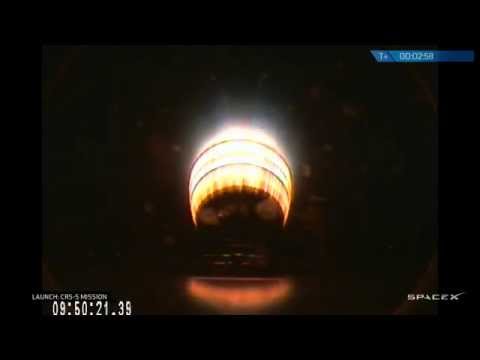Private spaceflight firm SpaceX launched its fifth cargo mission to the International Space Station today – but its planned test landing of the first stage of its Falcon 9 rocket on a boat was unsuccessful.
Most rockets are built for a single use only, falling into the sea once their fuel is spent. SpaceX CEO Elon Musk has likened this to throwing away your aircraft every time you fly and identified it as a key reason for the high cost of spaceflight.
That’s why SpaceX has attempted to land the first stage of its Falcon 9 rocket,with an eye to reusing it. After previous launches the company has fired up its rockets as they return to Earth, deploying a set of landing legs and reducing their speed but ultimately still landing in the ocean. It has also conducted small-scale land-based tests with its Grasshopper rocket.
For this latest flight, SpaceX positioned an autonomous barge off the coast of Florida to attempt the first ever Falcon 9 landing on a solid surface, following the launch at 947 GMT from Cape Canaveral, Florida, sending an unmanned Dragon capsule on its way to the ISS.
On its way down, the rocket successfully hit the barge, but came in too fast and was destroyed. “Close, but no cigar this time,” tweeted Musk shortly after the attempted landing, which took place around ten minutes after take-off. Musk also said it was too dark and foggy to get video of the landing, but SpaceX now plans to analyse data from the flight and try again with a future launch.
A successful landing will place SpaceX in a league of its own, as the ability to reuse rockets could drastically lower the cost of getting to orbit, though there are many more tests required before we see a second-hand rocket fly into space.
Competitors are already starting to take notice – earlier this week the French space agency, CNES, announced plans to develop its own reusable rocket tech. And in the long term, the ability to land a rocket on solid ground will assist in Musk’s ultimate goal: colonising Mars.
